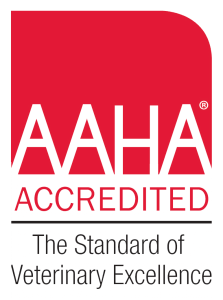Understanding Dog and Cat Ultrasound: A Comprehensive Guide
At Blue Oasis Pet Hospital, we prioritize the health and well-being of your furry companions. One essential diagnostic tool that plays a crucial role in assessing their internal health is ultrasound. In this article, we delve into the world of dog and cat ultrasound, exploring its uses, benefits, and how it enhances our ability to care for your beloved pets.
Understanding Abdominal Ultrasound
What Is Abdominal Ultrasound?
Ultrasound, also known as ultrasonography or sonographic imaging, is a non-invasive technique used in veterinary medicine. By recording echoes of ultrasonic waves, an abdominal ultrasound provides detailed images of internal structures without the need for surgery. Our veterinarians can closely examine organs within the abdominal cavity, including:
- Liver
- Kidneys
- Stomach
- Spleen
- Pancreas
- Adrenal glands
- Intestines
- Bladder
- Uterus and ovaries (in females)
- Prostate (in males)
- Lymph nodes
How Does Ultrasound Work?
During an ultrasound, high-frequency sound waves are directed into the area of interest. These waves may be reflected, absorbed, or transmitted through tissues. The reflected waves create detailed 2D or 3D images of the examined organs, allowing us to assess their size, shape, texture, location, and blood supply.
When Is Abdominal Ultrasound Recommended?
- Chronic Vomiting or Abdominal Pain: When x-rays alone don’t provide sufficient information, an ultrasound helps evaluate pets suffering from chronic vomiting or severe abdominal pain.
- Precise Localization of Abdominal Masses: Ultrasound assists in pinpointing the exact location of masses within the abdomen.
Advantages of Abdominal Ultrasound
- Non-Invasive: Unlike exploratory surgery, ultrasound poses minimal risk to your pet.
- Detailed Visualization: While x-rays show organ size and location, ultrasound reveals the architecture of abdominal contents.
- Diagnosing Cysts and Tumors: Ultrasound aids in detecting cysts, tumors, and other abnormalities.
What Happens After the Abdominal Ultrasound?
After the procedure, your veterinarian will call to discuss the findings with you once the final report is received. Depending on the results, further steps or treatments may be recommended. Rest assured that our team at Blue Oasis Pet Hospital is committed to providing the best care for your beloved companions.
Understanding Echocardiograms
What Is an Echocardiogram?
An echocardiogram is a non-invasive diagnostic procedure that uses high-frequency soundwaves to create real-time images of the heart. Just like in humans, this safe and painless test allows us to examine various aspects of your pet’s heart, including:
- Heart Valves: Assessing the function and integrity of heart valves.
- Heart Chambers: Examining the size and function of different heart chambers.
- Heart Walls: Evaluating the thickness and motion of heart walls.
- Blood Flow Direction: Studying blood flow patterns within the heart.
- Pericardial Sac: Investigating the protective sac around the heart.
Why Does Your Pet Need an Echocardiogram?
Early detection and accurate diagnosis are essential for managing heart disease in pets. Some common signs of heart issues include:
- Difficulty Breathing
- Fainting
- Coughing
- Exercise Intolerance
While our skilled veterinarians can identify heart murmurs or irregular rhythms during wellness exams, an echocardiogram provides detailed insights into your pet’s heart function. We recommend echocardiograms for pets with suspected heart disease or as part of routine monitoring.
The Procedure
During an echocardiogram, your pet typically lies quietly in a dark, calm room. Most pets tolerate the procedure well without sedation, although we assess each case individually. Our veterinary team reviews the images to evaluate heart health and function accurately.
Safety and Comfort
At Blue Oasis Pet Hospital, we prioritize your pet’s well-being. Our commitment to transparency means you can be present throughout the entire process. No “back rooms” here—pull up a chair, ask questions, and stay informed. Your pet deserves compassionate care, and so do you.
When to Consider an Echocardiogram
- Puppies and Kittens: If we detect heart murmurs early, we recommend an echocardiogram.
- Monitoring Treatment: Echocardiograms help assess the effectiveness of medications and interventions.
- Breeds at Risk: Certain dog breeds are prone to heart disease, warranting regular checks.
Remember, your pet’s heart health matters. Trust Blue Oasis Pet Hospital for accurate diagnostics and compassionate care. Schedule an appointment today!
Preparing for your dog or cat's ultrasound
Withholding Food or Urination is important if we are trying to look into the digestive or urinary track.
- Abdominal Ultrasounds: Your vet may ask your pet to fast for 8 to 12 hours before the appointment.
- Bladder Ultrasounds: Prevent your pet from urinating for 3 to 6 hours before the procedure.
Sedation
Sedation is indeed common during pet ultrasounds to ensure a calm and cooperative experience. Here are some important points to consider:
Purpose of Sedation:
- Relaxation: Sedation helps keep your pet calm and still during the procedure.
- Reducing Anxiety: It minimizes stress and anxiety, making the ultrasound process smoother.
Types of Sedation:
- Mild Sedation: For cooperative pets, mild sedation may suffice. It helps them remain relaxed without causing excessive drowsiness.
- Deeper Sedation or Anesthesia: Some pets may require deeper sedation or even general anesthesia, especially if they’re anxious or uncooperative.
Administering Sedation:
- Your veterinarian will determine the appropriate sedation based on your pet’s health, temperament, and the specific ultrasound being performed.
- Sedatives can be given orally, intravenously, or intramuscularly.
Monitoring During Sedation:
- While sedated, your pet’s vital signs (heart rate, respiratory rate, blood pressure) will be closely monitored.
- An experienced veterinary team ensures your pet’s safety throughout the procedure.
Post-Sedation Care:
- After the ultrasound, your pet will gradually wake up from sedation.
- Keep them warm and comfortable during recovery.
- Follow any post-procedure instructions provided by your vet.
Remember, the goal is to make the ultrasound experience as stress-free as possible for your furry companion. If you have any specific concerns or questions, don’t hesitate to discuss them with your veterinarian
Ultrasound Providers
We use two external providers to assist in providing full diagnostic ultrasound services to our Blue Oasis Pet Hospital clients. We use these specially trained providers to provide more comprehensive care.
Ultrasound Solutions, owned by Anne Elise Napier, DVM is a provider that we have worked WITH for many years and feel confident that Dr. Napier provides care for our patients as we would. We also work with Infinity Veterinary Imaging, owned by Erica Baravik-Munsell, DVM, DACVR who is a board certified veterinary radiologist. Having two providers allows us to ensure your pet can receive timely diagnostics. We will work with you to choose the correct provider for your pet.
Having two (2) ultrasound providers means our clients don’t have to leave our practice to have access to this high quality diagnostic imaging. What this means for our patients, they can have their diagnostics done in a space they are already familiar and comfortable with. So, this is a win-win for everyone.
Take-Home Message
Abdominal ultrasound and Echocardiograms are a powerful diagnostic tool that allows us to peer inside your pet’s body without invasive procedures. By combining expertise with cutting-edge technology, we ensure your dog or cat receives the highest standard of care.
If you have any questions about your pet’s abdominal ultrasound or echocardiogram or any other condition, don’t hesitate to reach out to our experienced veterinarians. Your pet’s health is our priority!


